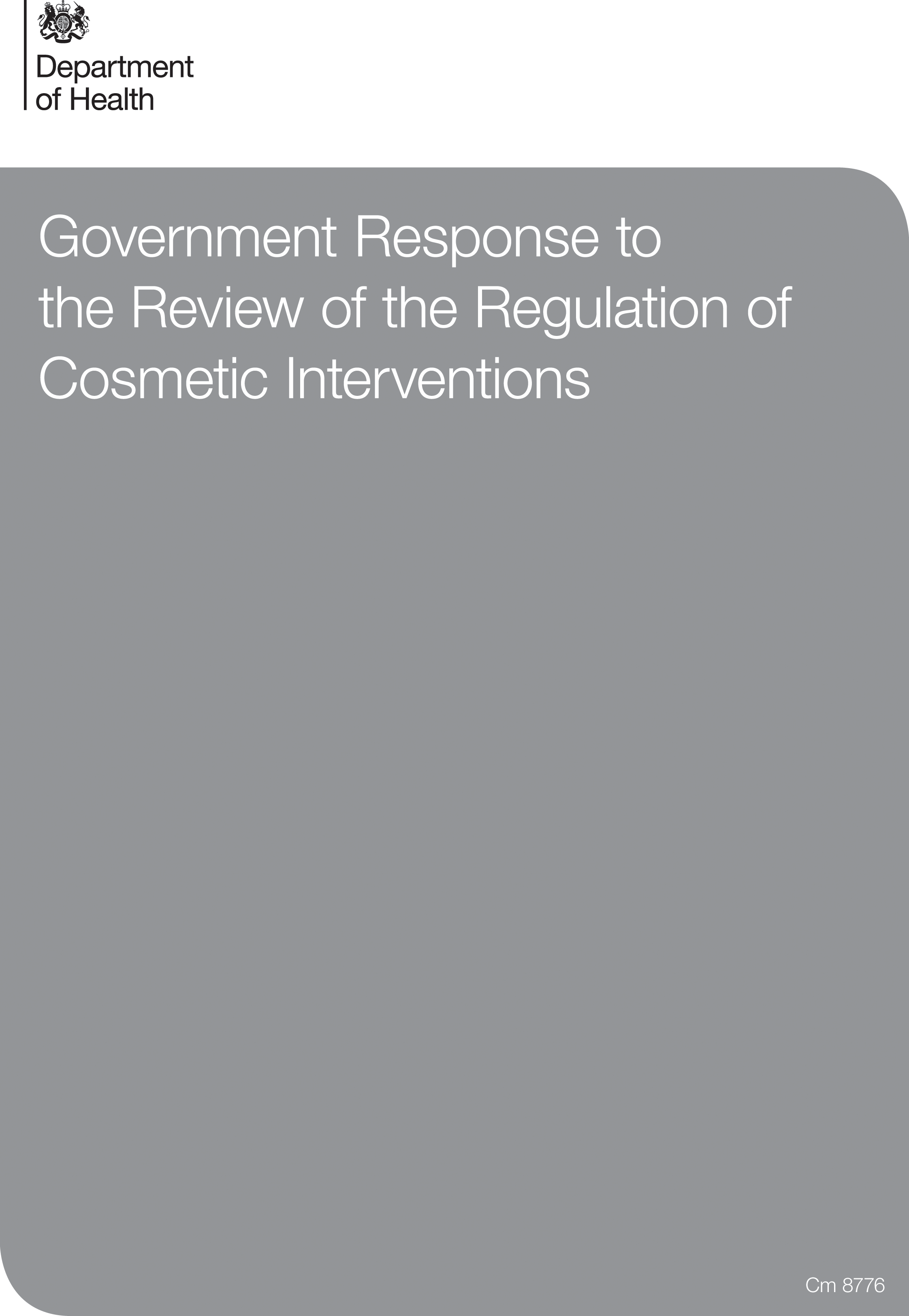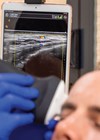Following the PIP implant scandal of 2010, The Department of Health (DH) commissioned a review of the regulation of cosmetic interventions in September 2012. In April 2013, following extensive consultation the review panel published its recommendations. The recommendations set out to, “provide a framework for both surgical and non-surgical interventions” and to set out, “…a range of actions to ensure practitioners have the right skills, the products used are safe, providers are responsible, people get accurate information and support is available if things go wrong.”
The Review made 40 recommendations [1]. In February 2014 the government finally published its Response to the Review of the Regulation of Cosmetic Interventions [2]. This document outlined the government’s intentions and actions following the recommendations made by the Keogh Review.

“…without an independent and mandatory register of providers who meet the necessary standards and have been accredited to join the register and held accountable, how will the consumer navigate to a safe provider?”
The response from those working in the field has been mixed but many express disappointment that it is essentially ‘business as usual’. I feel, however, that the actions proposed have the potential to deliver change.
- The Royal College of Surgeons has appointed a Cosmetic Surgery Interspeciality Committee (CSIC) to undertake a great deal of work to address the concerns raised regarding standards in cosmetic surgery. The General Medical Council (GMC) and Care Quality Commission (CQC) will be working closely with the CSIC to ensure standards are enforceable and underpinned by existing statutory regulation. This work should be completed by the end of this year.
- The government agrees with the need for standardised training, accredited qualifications and the need for appropriate clinical supervision, “by a clinical professional who has gained the accredited qualification to prescribe, administer and supervise aesthetic procedures.” The expectation being that this would, “bring a greater degree of properly trained professionalism to the industry, where regulated professionals will only wish to supervise properly trained practitioners.” Legislative options are being explored to ensure certain interventions are only carried out by appropriate healthcare professionals, “or persons who are nominated on the basis of their possession of relevant training and skills for the procedure in question.”
- Health Education England has been tasked with conducting a review of the training and skills needed for non-surgical cosmetic procedures and defining appropriate qualifications and accreditation requirements for the various professional groups.
- Proposals to revise the medical devices directive, published by the European Commission in September 2012 are currently under negotiation in the EU. Early indications show that proposed new legislation for implants, dermal fillers, and equipment for liposuction, lasers and intense pulsed light devises have broad support. The proposed legislation includes an EU wide register of medical devices available on the EU market, as well as information about safety concerns.
- The Medicines and Healthcare products Regulatory Agency (MHRA) is working closely with the GMC and in discussions with the General Dental Council (GDC) and Nursing and Midwifery Council (NMC) to develop a strong reporting culture.
- The Committee of Advertising Practice (CAP) code on responsible advertising has published new, expanded guidance on the marketing of cosmetic interventions and specifically addresses a number of issues of concern highlighted in the Review. The Advertising Standards Authority polices the code and may fine or prosecute those who breach it.
The present challenges and risks for the consumer as highlighted by the Keogh Review have been acknowledged and action is being taken with the appointment of the Interspeciality Committee, Health Education England (HEE) to look at training and education and the proposals for legislative change to tighten up both the classification and use of dermal fillers, and revisions in the CAP Code to tighten up advertising standards.
Until the work that now begins has been completed, it will be ‘business as usual’, but I remain optimistic that we will see:
- Appropriate training and education for those delivering cosmetic interventions.
- Recognised and qualified titles for those delivering cosmetic services.
- Responsible advertising, which should see an end to ‘special offers’ and false claims.
- Clarity on who can deliver cosmetic interventions and defined terms of supervision. At present, anyone can. The recommendations are clear, that only those qualified to prescribe should do so and others will only be able to do so if appropriately trained and supervised by a qualified prescriber who is registered with a statutory body. Accountability will fall on the supervisor. The HEE are working on the terms.
- We can expect changes in legislation, particularly for dermal fillers. It seems unlikely they will become prescription only but the goal is to ensure they are only administered by appropriately qualified healthcare practitioners or under supervision. Given the risks, it is certainly not appropriate for them to be administered by anyone, as is the case at the moment.
However, the government has clearly rejected the recommendation for an independent register. This because there are already statutory registers for nurses, doctors and dentists and similar registers are not statutory, but voluntary, self regulating and work well. In my opinion, we can design and support an independent register of providers who meet the necessary standards, have been accredited to join the register and be held accountable to those we serve, without a change in legislation; showing the tax payer we can behave like the professionals we are.
Self Regulation with an independent register is the one action most essential to pull all the standards together and encourage the consumer to choose providers who have been accredited. By the end of this year further clarity on all the above will be delivered and it is hoped we can all move forward in a safer and more structured environment. Time will tell, certainly providers must not sit back and passively await the outcomes, but rather, must actively engage with the processes in motion and positively support the outcomes we need and want, to improve patient safety and raise the credibility of this speciality.
References
1. Department of Health. Review of the Regulation of Cosmetic Interventions. 2013.
2. Department of Health. Response to the Review of the Regulation of Cosmetic Interventions. 2014.






